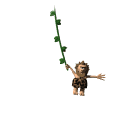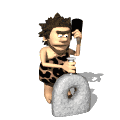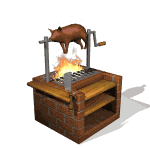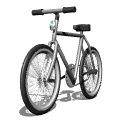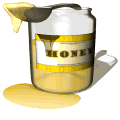|
Numeracy problems
to solve for Key Stage 1, 2 and 3
Key
Stage 1 Solve it...!
The animals have lost their spots!
|
You will need a double six
set of dominoes or you can draw them out.
These animals have all lost
their spots. Can you use the dominoes to give them their spots back?
This leopard
has lots its 12 spots. Use 2 dominoes to make a 12 spotted leopard.
How many other 12 spotted leopards can you make with the dominoes
from your set?
|
 |
 |
This
alligator has lost its 16 spots. Can you make an alligator with
16 spots, using 4 dominoes?
How many more 16 spotted
alligators can you make with the dominoes from your set? |
What if your alligators have
20 spots. Which dominoes would you use to make an alligator with 20
spots?
This snake has lost
a lot of spots. It should have 50. Use 10 dominoes to give the
snakes its spots back.
Can you make another
50 spotted snake using 10 different dominoes? |
 |
An extra task:
If you had a double 9 dominoes set, could you use 10 different dominoes
to make a snake with 100 spots?
What would be the largest
number of spots a snake could have using 10 dominoes from a double 9
set?
Key
Stage 2 Solve it...!
Peddling Along |
The pedal bicycle appeared
in Victorian times. Many people claimed to have invented it.
A German baron claimed to
have invented the first bike (without pedal). Then a Frenchman named
Michaux claimed to have produced the first bike (made of wood) in 1818.
By 1865, the Michaux workshop was producing four hundred per year. At
first, tyres were hard. The pneumatic (pump-up) tyre was patented in
1846 and John Dunlop began to manufacture them in 1888. The smoother
ride made cycling popular with those who could afford it. The best bicycles
cost £100 (the equivalent of about £500 now). They were
still less expensive than a horse and carriage, and more convenient
that either horse-drawn buses or trams.
Task A:
1. How many wheels are required to make 12 bicycles?
2. How many bicycles did the Michaux workshop make in six months?
3. How many pounds did three top quality bicycles cost?
4. How many pedals are needed for nine bicycles?
Add the results. You should
get 542. If not, try again.
Task B:
1. How many wheels are required to make 24 bicycles?
2. How many bicycles could the Michaux workshop make in three years?
3. If two friends wanted to share the cost of a top quality bicycle,
how much would they each pay?
4. How many pedals are needed for 39 bicycles?
Add the results. Did you
get 1376? If not, try again.
Task C:
1. How many years passed between Michaux inventing his bike and making
400 a year?
2. How many bicycles could the Michaux workshop make in nine years?
3. How many wheels are required for 392 bicycles?
4. How many years passed between the patenting of pneumatic tyres and
their manufacture by John Dunlop?
5. The best bicycles cost £100. An ordinary bicycle cost about
30 per cent of the price. How much is that?
Add the results. Did you
get 4503? If not, try again.
Key
Stage 3 Solve it...!
Feasting Fun |
Historians found a list of
goods required for a feast for the King of Wessex. You can see that
it was not a vegetarian meal!
10 geese
2 oxen
42 casks of ale |
300
loaves
10 jars of honey
20 chickens |
10
cheeses
5 salmon
20 pounds of hay |
1.
a) If the hay were given to eight horses, how many ounces would each
receive? (there are 16 ounces in a pound.)
b) How much hay would have been needed to feed 13 horses?
2.
a) If the ox legs were cut into 123 pieces, how many servings of ox
leg would there be?
3.
a) One of the cheese is shared by a table of eight guests. What percentage
of the cheese can each person have?
b)Each portion of cheese costs a half-groat. What would be the total
cost of 2 and a half cheeses?
4.
a) If each salmon weighed eight and a half ounces, how many ounces would
there be altogether?
5.
a) If the king ordered each cask of ale to be divided into 56 portions,
how many servings of ale would there be?
b) If each person at the feast consumed 6 portions of ale, how many
people attended?
Add the results. Did you
get 3865.5? If not, try again.
An extra task:
Design a menu for people attending the feast using the ingredients available.
|

